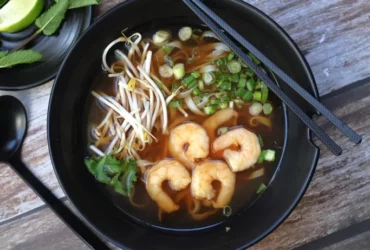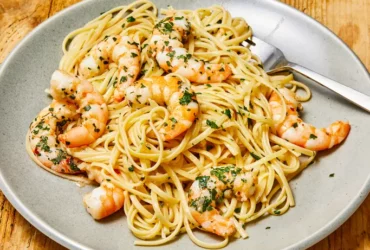Ingredients
Main Ingredients
In the context of the Fish Filet in Thai Coconut Curry Sauce recipe, the main ingredients play a crucial role in determining the flavor and texture of the dish.
The main ingredients for this recipe typically include:
Fish fillet
This is the protein component of the dish, which can be made from various types of fish such as cod, tilapia, or snapper. The fish fillet serves as a base for the curry sauce to cling onto.
Coconut milk
A staple ingredient in Thai cuisine, coconut milk adds richness and creaminess to the dish. It is often used in combination with other ingredients to create a smooth and velvety texture.
Curry paste
This is a key component of Thai cuisine, and it provides the distinct flavor profile for this recipe. The curry paste can be made from a variety of spices including lemongrass, galangal, chilies, garlic, and shallots.
Aromatics
Ingredients such as onions, bell peppers, and mushrooms add depth and complexity to the dish. They are sautéed with the curry paste to release their flavors and aromas.
Herbs
Thai basil, cilantro, or mint leaves add freshness and fragrance to the dish, balancing out the richness of the coconut milk.
Spices
Cumin, coriander, cayenne pepper, and turmeric are commonly used spices in this recipe. They enhance the flavor profile of the curry sauce and provide warmth without overpowering the other ingredients.
The key to creating a delicious Fish Filet in Thai Coconut Curry Sauce lies in the selection and combination of ingredients used in the recipe.
For the fish filets, you’ll want to choose a firm-fleshed white fish such as cod, tilapia, or mahi-mahi. These types of fish hold up well to the flavors and textures of the curry sauce and will provide a pleasant contrast to the rich and creamy coconut milk.
The Thai red curry paste is a fundamental ingredient in this recipe, providing an intense and aromatic flavor that sets the tone for the entire dish. You can find this paste at most Asian grocery stores or online. It typically includes ingredients such as lemongrass, galangal, shallots, chilies, garlic, and shrimp paste.
Canned coconut milk is another essential ingredient in Thai cuisine, providing a creamy texture and rich flavor to the curry sauce. Look for full-fat canned coconut milk, which will give the best results.
Other ingredients that add depth and complexity to the recipe include fish sauce, lime juice, palm sugar, and fresh cilantro. The fish sauce provides a salty umami flavor, while the lime juice adds a bright and citrusy note. Palm sugar adds a subtle sweetness, balancing out the savory flavors of the dish.
You’ll also need some aromatics such as onion, lemongrass, galangal, and Thai chilies to sauté at the beginning of the recipe. These ingredients add depth and warmth to the curry sauce and help to release the flavors of the other ingredients.
Finally, some fresh cilantro leaves are used as a garnish to add color and freshness to the finished dish.
Overall, the combination of these ingredients creates a complex and flavorful Thai Coconut Curry Sauce that pairs perfectly with the delicate flavor of fish filets. With this recipe, you’ll be able to create an authentic and delicious Fish Filet in Thai Coconut Curry Sauce in the comfort of your own kitchen.
1 pound firm white fish (such as cod or tilapia), cut into 4 pieces
The star of this dish is 1 pound firm white fish, cut into 4 pieces. For this recipe, you can use cod or tilapia as alternatives to other types of white fish.
Select a firm white fish that will hold its shape well when cooked. The most commonly used white fish for Thai recipes are cod, tilapia, and swordfish. If you prefer a more delicate flavor, go with cod or tilapia.
To prepare the fish for the recipe, cut 1 pound of it into four equal pieces. Make sure to remove any bones, skin, and dark meat from the fatty areas as they can impart an unpleasant flavor to your dish.
- You will need about 1 pound firm white fish.
- Select a fish like cod or tilapia for this recipe.
- Cut the fish into four equal pieces before using it in the curry sauce.
Once you have prepared your fish, proceed with cooking it in the Thai coconut curry sauce. This will give your dish a rich, creamy, and aromatic flavor that is characteristic of Thai cuisine.
1/2 cup coconut milk
The key to a rich and flavorful Thai Coconut Curry sauce is in its ingredients, and one of the essential components is coconut milk.
In this recipe for Fish Fillet in Thai Coconut Curry Sauce, we use 1/2 cup of coconut milk to create a creamy and velvety texture that coats our fish perfectly.
Coconut milk comes from mature coconuts, which are high in healthy fats and proteins. It’s an excellent source of medium-chain triglycerides (MCTs) that provide sustained energy and support weight management.
When choosing coconut milk for this recipe, look for full-fat or high-fat versions. The high fat content will help to create a rich and creamy sauce without the need for added cream or other thickeners.
Benefits of Coconut Milk in Thai Cooking
- Creamy Texture: Coconut milk provides an excellent base for our curry sauce, giving it a smooth and velvety texture that’s both rich and indulgent.
- Flavor Enhancement: Coconut milk is naturally sweet and nutty in flavor, which complements the spices and herbs used in Thai cooking. It adds depth and complexity to the dish without overpowering the other ingredients.
- Emulsification: Coconut milk contains a mixture of saturated and unsaturated fatty acids that help emulsify the sauce, preventing it from separating or breaking when cooked.
Tips for Using Coconut Milk in This Recipe
- Always use fresh coconut milk to ensure the best flavor and texture. Shake the can well before opening to redistribute the solids.
- To avoid a separated or curdled sauce, heat the coconut milk gently over low-medium heat, stirring constantly until it’s warm and fragrant.
- Don’t be tempted to add extra coconut milk if the sauce becomes too thick. Simply whisk in some fish stock or water to adjust the consistency as needed.
In summary, 1/2 cup of coconut milk is an essential ingredient in our Fish Fillet in Thai Coconut Curry Sauce recipe. Its creamy texture, flavor enhancement, and emulsification properties make it an ideal base for a rich and indulgent curry sauce that complements the delicate flavors of our fish perfectly.
2 tablespoons Thai red curry paste
When it comes to making a delicious and authentic Thai coconut curry sauce for our Fish Filet in Thai Coconut Curry Sauce Recipe, one of the most crucial ingredients is 2 tablespoons of Thai red curry paste.
Thai red curry paste is a fundamental component of many Thai dishes, including curries, soups, and sauces. It’s typically made from a combination of spices, herbs, chilies, garlic, lemongrass, shallots, galangal, and other ingredients that are carefully selected to provide depth, warmth, and aromatic complexity.
Thai red curry paste is characterized by its deep reddish-brown color and pungent aroma. It’s usually sold in small jars or packets in most Asian grocery stores or online, and it can be found in various levels of spiciness to suit different tastes.
The flavor profile of Thai red curry paste is intense and multifaceted. On the one hand, it has a bold, slightly sweet flavor that’s derived from the chilies, lemongrass, and other spices. On the other hand, it has a pungent, slightly bitter taste that comes from ingredients like galangal and shallots.
When you cook with Thai red curry paste, it adds an instant layer of depth and complexity to your dish. It’s especially good at enhancing the flavors of protein-based dishes like our Fish Filet in Thai Coconut Curry Sauce Recipe, where it helps to bring out the sweetness and richness of the fish.
To get the most out of 2 tablespoons of Thai red curry paste, make sure to cook it for a sufficient amount of time. This will allow the flavors to meld together and intensify, resulting in a rich, savory sauce that’s full of character and charm.
Here are some tips to keep in mind when working with Thai red curry paste
- Adjust to taste: If you’re worried about the spiciness level of your dish, start by using a small amount (1 teaspoon) and adjust to taste.
- Combine with coconut milk: Mixing Thai red curry paste with coconut milk helps to create a rich, creamy sauce that’s characteristic of many Thai dishes.
- Add aromatics: Chilies, garlic, lemongrass, and other herbs can be added to your dish to enhance the flavor of your Thai red curry paste.
In conclusion, 2 tablespoons of Thai red curry paste is an essential ingredient in our Fish Filet in Thai Coconut Curry Sauce Recipe. Its bold, slightly sweet flavor, combined with its intense aroma and pungent taste, makes it an ideal addition to any dish where you want to create a rich, savory sauce.
1 tablespoon soy sauce
In this recipe for Fish Fillet in Thai Coconut Curry Sauce, one key ingredient is soy sauce. Soy sauce is a fermented liquid condiment made from soybeans and salt. It is commonly used as a flavor enhancer in many Asian cuisines, including Thai cuisine. In the context of this recipe, the 1 tablespoon of soy sauce serves to add depth and umami flavor to the curry sauce.
When using soy sauce in cooking, it’s worth noting that there are different types available. Light soy sauce has a lighter color and is milder in flavor, while dark soy sauce has a darker color and is more intense in flavor. In this recipe, either type could be used, although the dark soy sauce may add a slightly richer flavor to the curry sauce.
The role of soy sauce in Thai cuisine is often combined with other ingredients such as fish sauce, lime juice, and chili peppers to create complex flavors. In this particular recipe, the 1 tablespoon of soy sauce is blended with coconut milk, Thai red curry paste, and other spices to create a rich and flavorful sauce for the fish fillet.
Overall, the use of 1 tablespoon of soy sauce in this Fish Fillet in Thai Coconut Curry Sauce recipe adds a savory depth to the dish that complements the sweetness of the coconut milk and the spiciness of the curry paste. It is just one of many ingredients that work together to create a delicious and authentic Thai-inspired meal.
1 tablespoon brown sugar
Brown sugar is used as an ingredient to add depth and richness to a variety of dishes, including the Fish Fillet in Thai Coconut Curry Sauce recipe. In this particular recipe, 1 tablespoon of brown sugar plays a significant role.
Brown sugar is a type of sugar that is made by caramelizing refined sugar through a process involving heat, resulting in a darker color and distinct flavor compared to regular white sugar. The molasses content gives it a deeper, more complex taste, which complements the bold flavors often found in Thai cuisine.
When added to the Fish Fillet in Thai Coconut Curry Sauce recipe, 1 tablespoon of brown sugar can be mixed into the sauce before or after cooking, depending on personal preference. Its primary function is to enhance and balance out other sweet notes from ingredients such as coconut milk and spices without overpowering them.
In terms of nutritional content, brown sugar provides a minimal amount of calories, carbohydrates, and some micronutrients like manganese due to its molasses content. However, it should be consumed in moderation considering its added sugars contribute towards the overall calorie intake of the meal.
The addition of 1 tablespoon of brown sugar will slightly sweeten the Fish Fillet in Thai Coconut Curry Sauce recipe without significantly altering its flavor profile or the delicate taste of the fish fillets. It serves as a complement to other spices, herbs, and coconut-based ingredients commonly used in this dish, thereby creating a well-rounded and balanced taste experience.
2 cloves garlic, minced
When it comes to preparing a delicious and authentic Fish Filet in Thai Coconut Curry Sauce, one of the key ingredients is 2 cloves garlic, minced.
In this recipe, garlic plays a crucial role in adding depth and richness to the curry sauce.
To prepare the garlic for use in the recipe, it’s essential to mince it finely. This involves peeling the garlic cloves and using a knife or garlic press to break down the bulbs into small pieces.
The resulting minced garlic will be soft, fluffy, and easily distributable throughout the curry sauce, allowing its flavors to meld together with the other ingredients in harmony.
When adding the minced garlic to the recipe, it’s essential to sauté it for a brief period to allow its oils to release and infuse into the mixture, intensifying its aroma and flavor.
This subtle yet crucial step will elevate the entire dish from being merely good to being truly exceptional, as the flavors of the garlic blend beautifully with the coconut milk, fish, and other ingredients in perfect harmony.
1 tablespoon fresh lime juice
The ingredient “1 tablespoon fresh lime juice” plays a significant role in this recipe, particularly in balancing the flavors and adding a burst of citrusy freshness to the dish. Here are some key points about using fresh lime juice:
Benefits of Fresh Lime Juice:
- Enhances flavor: The acidity in lime juice helps to brighten up the flavors of other ingredients, making the curry sauce more complex and interesting.
- Adds moisture: A small amount of fresh lime juice can add moisture to the dish without overpowering it.
Tips for Using Fresh Lime Juice:
- Choose a ripe lime: For maximum flavor, choose a lime that is heavy for its size and has a slightly soft texture when pressed gently.
- Squeeze juice at the right time: Squeeze fresh lime juice just before using it, as the juice can lose its potency if left to sit for too long.
Substitution Options
- Bottled lime juice: If you don’t have access to fresh limes, bottled lime juice is a good alternative. However, keep in mind that it may not provide the same level of flavor and texture as freshly squeezed lime juice.
In summary, using 1 tablespoon of fresh lime juice in this fish filet in Thai coconut curry sauce recipe adds a crucial element of freshness and balance to the dish, elevating the flavors of the other ingredients. By choosing the right lime, squeezing the juice at the right time, and understanding substitution options, you can make the most out of this ingredient and create a delicious and well-rounded dish.
The ingredients for this delicious Fish Filet in Thai Coconut Curry Sauce recipe are diverse and play a crucial role in creating the authentic flavors and textures characteristic of Thai cuisine.
For the fish filets, we recommend using firm white fish such as cod, halibut or snapper. These fish have a meaty texture that can hold up to the bold flavors of the curry sauce.
The coconut milk is an essential ingredient in this recipe, providing richness and creaminess to the curry sauce. We use full-fat coconut milk for its rich and velvety texture.
Thai red curry paste is another crucial component, adding intense heat and depth to the dish. Look for a reputable brand that contains all-natural ingredients without any added preservatives or artificial flavorings.
Fresh lemongrass adds an aromatic and citrusy flavor, while galangal provides a pungent and earthy undertone. Both of these ingredients are commonly used in Thai cooking and should be found at most Asian markets or well-stocked grocery stores.
Cilantro is another popular herb used in Thai cuisine, adding freshness and a subtle bitterness to the dish. We recommend using fresh cilantro leaves for garnish and chopped cilantro as a finishing touch.
Lastly, we use a combination of fish sauce, lime juice, brown sugar, and palm sugar to balance the flavors in the curry sauce. Fish sauce provides umami, while lime juice adds brightness and acidity.
This recipe also calls for some pantry staples such as vegetable oil or coconut oil, salt, pepper, and any additional spices you might want to add for extra flavor. We recommend using a combination of black peppercorns and white peppercorns for added depth.
Instructions and Tips
Cooking the Fish
- To cook the fish filet to perfection in Thai coconut curry sauce, you’ll need to follow some essential instructions and tips that will elevate your culinary skills.
- Firstly, make sure you’re using the right type of fish for this recipe. Flaky white fish such as cod or tilapia work well with the rich and creamy flavors of the Thai coconut curry sauce.
- Cut the fish filet into uniform pieces to ensure even cooking. A general rule of thumb is to cut them about 1-2 inches thick, depending on how large you want your final portions to be.
- Next, prepare the Thai coconut curry sauce by combining the coconut milk, red curry paste, fish sauce, palm sugar, and lime juice in a blender or food processor. Blend until smooth and creamy, then set aside.
- In a large skillet or wok, heat about 2-3 tablespoons of oil over medium-high heat. Once hot, add the aromatics such as lemongrass, galangal, and chilies, and sauté for about 1-2 minutes until fragrant.
- Then, add the coconut curry sauce to the skillet and bring it to a simmer. Let it cook for about 5-7 minutes or until the sauce has thickened slightly and reduced by about half.
- Add the fish filet pieces to the skillet and spoon some of the sauce over them. Cook for about 3-4 minutes on each side, or until the fish is cooked through and flakes easily with a fork.
- Finally, garnish your dish with fresh cilantro, basil leaves, and sliced chilies, and serve it hot with steamed rice or noodles.
Tips to keep in mind:
- To prevent the coconut milk from separating during cooking, make sure to stir the sauce constantly and add a little water if needed.
- If using frozen fish filet, thaw it first by leaving it in room temperature for about 30 minutes before cutting.
- You can adjust the level of spiciness to your liking by adding more or less red curry paste.
- To make this recipe more substantial, add some protein like chicken, beef, or tofu alongside the fish filet.
With these instructions and tips, you’re ready to cook a delicious Fish Filet in Thai Coconut Curry Sauce that will transport your taste buds to the streets of Thailand!
When following instructions for a recipe like the Fish Filet in Thai Coconut Curry Sauce, it’s essential to read and understand each step before starting to prepare the dish.
To begin with, make sure you have all the necessary ingredients listed on hand. This includes fresh fish filets, coconut milk, curry paste, Thai red chilies, garlic, galangal or ginger, lemongrass, shallots, fish sauce, palm sugar, and fresh cilantro for garnish.
It’s also crucial to prepare the aromatics before cooking the fish. This includes finely chopping the shallots, garlic, and galangal, as well as bruising the lemongrass with the back of a knife to release its oils and flavor.
To ensure the coconut milk doesn’t curdle or separate during heating, it’s recommended to add the curry paste first and stir-fry until fragrant before adding the coconut milk. This allows the spices to infuse into the oil and helps prevent lumps from forming when the liquid is added.
For a more authentic Thai flavor, use fish sauce that hasn’t been diluted with water or other ingredients. The real deal can be quite salty, but it’s essential for adding depth and umami taste to the dish.
Don’t overcook the fish filets! This will make them tough and unpalatable. Aim for a flaky, moist texture instead. To achieve this, cook the fish until it’s cooked through but still slightly firm in the center.
When serving, garnish with fresh cilantro leaves and a sprinkle of toasted peanuts or crispy shallots to add some crunch and visual appeal. You can also serve steamed jasmine rice alongside the dish for a classic Thai accompaniment.
For those who prefer milder flavors, feel free to adjust the level of spiciness by reducing the number of chilies or substituting in some milder peppers like bell peppers or Anaheim peppers.
Heat 1 tablespoon of oil in a large skillet over mediumhigh heat.
To successfully execute this recipe, it’s essential to follow the instructions carefully and take note of a few additional tips.
Heat Management
When heating the oil in a large skillet over medium-high heat, ensure you’re using a pan that can distribute heat evenly. A well-seasoned cast-iron or stainless steel pan is ideal for this task. If you’re using a non-stick pan, make sure it’s preheated properly to prevent any sticking issues.
Oil Selection
The choice of oil is crucial when cooking with high heat. Opt for a neutral-tasting oil like avocado oil or grapeseed oil, which have high smoke points and can handle the high temperatures without breaking down or smoking.
Avoid Overheating
Medium-high heat is ideal for this recipe, but avoid overheating the pan. This can cause the oil to burn, leading to a bitter flavor in your dish. Use a thermometer to monitor the temperature, which should range between 400°F to 450°F (200°C to 230°C).
Don’t Skimp on the Oil
Using only 1 tablespoon of oil might not be enough to prevent the fish from sticking to the pan. Consider adding an extra ½ tablespoon or even more, depending on the size and number of fish fillets you’re cooking.
Pan Frying Techniques
- Once the oil is hot, carefully place the fish fillets in the pan, leaving about 1 inch (2.5 cm) of space between each piece.
- Don’t overcrowd the pan, as this can lower the temperature and affect the cooking time.
- Cook for 3-4 minutes on the first side or until you notice a golden-brown crust forming.
- Flip the fish over and cook for an additional 2-3 minutes or until it reaches your desired level of doneness.
Tips for a Flawless Finish
- Maintain a clean workspace, as any debris can contaminate the dish and lead to food poisoning.
- Carefully pat dry the fish fillets with paper towels before cooking to remove excess moisture, which can prevent them from browning evenly.
Add the fish to the skillet and cook for 34 minutes on each side, or until cooked through.
To create this delectable dish, you will need to follow these steps carefully.
FIRSTLY, let’s start with preparing the ingredients. You will need:
- 4 fish fillets (any white fish works well)
- A can of Thai coconut milk
- 2 tablespoons of Thai red curry paste
- 1 tablespoon of fish sauce (optional)
- 1 tablespoon of brown sugar
- 2 cloves of garlic, minced
- 1 tablespoon of grated fresh ginger
- Salt and pepper to taste
- A few sprigs of fresh cilantro for garnish
- NOW that you have all your ingredients ready, let’s start cooking.
- Preheat the oil in a large skillet over medium heat. Add the fish fillets and cook for 34 minutes on each side, or until cooked through.
- While the fish is cooking, prepare the Thai coconut curry sauce. In a blender or food processor, combine the coconut milk, curry paste, fish sauce (if using), brown sugar, garlic, and ginger. Blend until smooth.
- Add the blended sauce to the skillet with the fish fillets and stir to coat the fish evenly. Cook for an additional 2-3 minutes on each side, or until the sauce has thickened slightly.
- Once the fish is cooked through and the sauce is heated through, remove the skillet from the heat and garnish with fresh cilantro sprigs.
- FINAL STEP: Serve the fish fillets in Thai coconut curry sauce hot over steamed rice or noodles. Enjoy!
Remove the fish from the skillet and set aside.
To successfully prepare the Fish Filet in Thai Coconut Curry Sauce, it’s essential to follow the instructions carefully and take note of these valuable tips. Once you have removed the fish from the skillet, it’s crucial to set it aside to prevent any potential overcooking or drying out.
When removing the fish from the skillet, use a pair of tongs or a slotted spoon to avoid breaking or crumbling the delicate fillets. This will ensure that the fish stays intact and retains its moisture throughout the cooking process.
After setting the fish aside, you can proceed with preparing the Thai Coconut Curry Sauce. This sauce is a fundamental component of many Thai dishes, and mastering it is essential for achieving authentic flavors in your Fish Filet dish.
To make an excellent Thai Coconut Curry Sauce, start by sautéing aromatics such as lemongrass, galangal, and chilies in a little oil until they’re fragrant and slightly caramelized. This will release the natural oils from these ingredients, adding depth and complexity to your sauce.
Next, add coconut milk to the skillet, stirring continuously to prevent it from curdling or separating. Bring the mixture to a simmer, allowing the flavors to meld together and the sauce to thicken slightly.
Once the sauce has thickened to your liking, you can add any desired spices, herbs, or other flavorings. For this recipe, you may want to include elements like fish sauce, lime juice, and Thai basil to give the dish its signature flavors.
To complete the Fish Filet in Thai Coconut Curry Sauce, gently place the reserved fish fillets back into the skillet with the sauce and let them cook for a few minutes on each side until they’re cooked through.
Finally, serve the fish hot, garnished with additional Thai basil leaves, if desired. This will not only add visual appeal to your dish but also provide an extra burst of fresh flavor.
To achieve success with this recipe for fish filet in Thai coconut curry sauce, it’s crucial to follow these instructions and tips.
Select the right type of fish: Choose a firm white fish such as cod, tilapia or mahi-mahi for best results. Avoid delicate fish like sole or flounder that may fall apart when cooked.
- Avoid overcooking the fish; it should be moist and flaky in the center.
- Mix the curry sauce ingredients: In a blender or food processor, combine coconut milk, Thai red curry paste, fish sauce, lime juice, palm sugar, and vegetable oil. Blend until smooth.
- To intensify the flavors of the curry paste, sauté it in a little oil before blending with the other ingredients.
- Cook the fish and sauce separately: Cook the fish fillets in a skillet over medium-high heat, until browned on both sides and cooked through. Set aside to keep warm.
- While cooking the fish, reheat the curry sauce in a separate pan, whisking continuously to prevent lumps from forming.
- Assemble and serve: Place cooked fish fillets on individual plates or a large serving platter. Spoon the coconut curry sauce over the top of each fish, garnished with fresh cilantro leaves and crispy shallots if desired.
- This recipe serves 4-6 people; feel free to adjust the quantity as needed for your gathering.
Making the Curry Sauce
To make a delicious and authentic Thai-inspired curry sauce for your fish filet, follow these step-by-step instructions and tips:
Ingredients
You will need the following ingredients to make the curry sauce:
- Creamy Coconut Milk: A can of full-fat coconut milk is essential to create a rich and creamy base for your curry sauce.
- Thai Red Curry Paste: This paste adds a deep, slightly spicy flavor to your curry sauce. You can find it in most Asian grocery stores or online.
- Fish Sauce: A small amount of fish sauce adds a salty, umami flavor to the dish. Use it sparingly!
- Lime Juice: Fresh lime juice adds a bright, citrusy note to your curry sauce.
- Sugar: A small amount of sugar balances out the acidity in the curry sauce and brings all the flavors together.
Instructions
To make the curry sauce, follow these steps:
- Heat a tablespoon or two of oil in a pan over medium heat. This can be vegetable or coconut oil.
- Add the Thai red curry paste and sauté for about 1-2 minutes until it releases its aroma and starts to darken slightly.
- Pour in the full-fat coconut milk, stirring continuously as it simmers. Bring the mixture to a gentle simmer.
- Add the fish sauce, lime juice, and sugar. Stir well to combine.
- Reduce the heat to low and let the curry sauce simmer for about 5-7 minutes, stirring occasionally, until it has thickened slightly and reduced.
Tips and Variations
Here are some additional tips and variations to make your fish filet in Thai coconut curry sauce recipe even more delicious:
- Add Some Spice: If you prefer a spicier curry, add some red pepper flakes or sliced fresh chilies to the pan with the curry paste.
- Use Fresh Herbs: Add some chopped fresh Thai basil leaves or cilantro to the curry sauce for added flavor and freshness.
- Add Some Aromatics: Saute some onions, garlic, or lemongrass along with the curry paste for added depth of flavor.
Now that you have a delicious Thai-inspired curry sauce to serve your fish filet in, don’t be afraid to experiment and adjust the flavors to your liking. Enjoy!
To prepare an authentic Thai-inspired fish filet in coconut curry sauce, it’s essential to follow a series of instructions and tips that guarantee a delectable dish.
The first step involves selecting high-quality ingredients, including fresh fish fillets preferably of cod or tilapia, which are best suited for their mild flavor and flaky texture. Freshness is also crucial when choosing vegetables such as bell peppers, carrots, and Thai basil leaves. The authentic flavor of this dish largely relies on the quality of these components.
Before preparing the sauce, it’s indispensable to prepare all the spices and herbs in advance, including Thai red curry paste, fish sauce, lime juice, palm sugar, and grated ginger. This will help streamline the preparation process while ensuring the flavors meld harmoniously together.
To make the coconut curry sauce, start by heating a tablespoon of vegetable oil in a wok or large skillet over medium heat. Then add 2-3 tablespoons of Thai red curry paste and cook for approximately one to two minutes until it’s fragrant and slightly darkened. Next, pour in the coconut milk, stirring continuously as it heats through, allowing it to simmer gently.
Now, add fish sauce, lime juice, palm sugar, and grated ginger to the wok or skillet. Stir well to combine, bringing the mixture to a gentle boil before reducing the heat to low and letting it simmer for approximately five minutes, until it thickens slightly.
While the sauce is cooking, prepare the fish fillets by seasoning them with salt, black pepper, and a sprinkle of Thai red curry powder. Then, in a separate pan, heat a tablespoon of oil over medium-high heat and sear the fish on each side for about 3-4 minutes per side or until cooked through.
Finally, to serve, place the fish filet on top of a bed of steamed rice or noodles, spooning the coconut curry sauce generously over it. Garnish with chopped Thai basil leaves and a sprinkle of toasted peanuts to complete this exquisite dish.
In conclusion, cooking a delicious fish filet in Thai coconut curry sauce requires attention to detail and precise instructions. The key lies in preparing high-quality ingredients and adhering strictly to the recipe while allowing each component to meld together harmoniously. With patience and practice, you’ll master the art of this mouth-watering dish and become an expert in crafting authentic Thai cuisine.
In a small saucepan, heat the coconut milk over medium heat.
To create a mouthwatering Fish Filet in Thai Coconut Curry Sauce, follow these detailed instructions and tips:
Step 1: Prepare the Ingredients
Before you start cooking, make sure to have all the necessary ingredients ready. These include:
- 1 pound fish filet, cut into bite-sized pieces
- Curry sauce mix or Thai red curry paste
- 1 can of coconut milk
- Fish sauce
- Sugar
- Ginger, grated
- Lemongrass, bruised
- Basil leaves, chopped
- Salt and pepper,
Step 2: Heat the Coconut Milk
In a small saucepan, heat the coconut milk over medium heat. Stir occasionally until it reaches a gentle simmer.
Step 3: Make the Curry Sauce
- Mix the curry sauce mix or Thai red curry paste with a little water to create a smooth paste.
- Add the ginger and lemongrass to the coconut milk and stir for 1-2 minutes.
- Pour in the curry sauce mix, fish sauce, sugar, and a pinch of salt and pepper.
Stir until the sauce is well combined and heated through.
Step 4: Add the Fish Filet
Add the fish filet pieces to the curry sauce and gently simmer for 3-5 minutes, or until cooked through.
Step 5: Serve and Enjoy!
- Garnish with basil leaves, chopped and sprinkle with a pinch of salt and pepper.
- Serve immediately, accompanied by steamed rice or noodles.
Add the curry paste, soy sauce, brown sugar, garlic, and lime juice to the saucepan.
To create a mouth-watering Fish Filet in Thai Coconut Curry Sauce, follow these instructions and tips for adding the essential flavors to your dish.
Add the Aromatics
Start by heating 2 tablespoons of oil in a saucepan over medium heat. Once the oil is hot, add 3-4 minced cloves of garlic and sauté until fragrant, stirring occasionally.
The Flavor Boosters
Next, add the following ingredients to the saucepan:
- Curry Paste: Add 1-2 tablespoons of Thai red or green curry paste, depending on your desired level of spiciness. Stir well to combine with the garlic and oil.
- Soy Sauce: Pour in 2 tablespoons of soy sauce, which will add depth and umami flavor to the dish.
- Brown Sugar: Add 1 tablespoon of brown sugar to balance out the savory flavors with a touch of sweetness.
- Lime Juice: Squeeze in 2-3 tablespoons of freshly squeezed lime juice, which will add a burst of citrus flavor and help to brighten the dish.
Mix all the ingredients together, stirring constantly, until the curry paste is well combined with the oil and the flavors have melded together. Bring the mixture to a simmer, then reduce the heat to low and let it cook for 2-3 minutes, allowing the flavors to develop and intensify.
Whisk until smooth and bring to a simmer.
To make this delectable fish filet dish, you’ll need to follow a few key steps that will elevate your culinary skills and impress your loved ones with its unique flavors.
Step 1: Preparing the Ingredients
Before we dive into the cooking process, ensure you have all the necessary ingredients within arm’s reach. For this recipe, you’ll need:
- Fish filets (any firm white fish works well)
- Thai red curry paste
- Canned coconut milk
- Lime juice
- Fresh cilantro leaves for garnish
- Salt and pepper, to taste
Step 2: Whisking the Curry Paste with Coconut Milk
Whisk until smooth:
- Thai red curry paste should be whisked smoothly into coconut milk.This will create a uniform, silky sauce that coats your fish filets perfectly.
Step 3: Bringing to a Simmer
Once the curry paste and coconut milk mixture is whisked together, bring it to a simmer in a medium saucepan over medium heat.This step allows the flavors to meld together, intensifying the overall taste experience of your dish. Be careful not to let it boil, as this may cause the sauce to separate.
Step 4: Adding Lime Juice and Seasoning
Add a squeeze of fresh lime juice and a pinch of salt and pepper to taste. This enhances the flavors without overpowering them.Taste as you go, making sure the seasoning is just right for your palate.
Step 5: Cooking the Fish Filets
Cook the fish filets in a separate pan with a bit of oil until they’re cooked through and flaky. This should only take about 3-4 minutes per side, depending on thickness.This step ensures your fish is cooked just right, without being overcooked or undercooked.
Step 6: Serving Your Masterpiece!
Place the cooked fish filets onto a bed of Thai coconut curry sauce and garnish with fresh cilantro leaves. This dish is now ready to be devoured.The result is a harmonious blend of flavors that will leave you wanting more – your Fish Filet in Thai Coconut Curry Sauce Recipe is sure to impress!
To create a delicious Fish Fillet in Thai Coconut Curry Sauce, follow these detailed instructions and tips:
Select Fresh Ingredients: Start by selecting the freshest ingredients possible, including firm white fish fillets (such as cod or tilapia), aromatic vegetables like lemongrass, galangal, and Thai basil, and a variety of spices including cumin, coriander, and turmeric.
Marinate the Fish Fillets: Marinate the fish fillets in a mixture of coconut milk, fish sauce, palm sugar, and lime juice for at least 30 minutes to allow them to absorb the flavors.
Saute the Aromatic Vegetables: Heat some oil in a pan over medium heat and sauté the lemongrass, galangal, and Thai basil until they are fragrant and slightly caramelized. This will release their oils and intensify their flavor.
Add Spices and Coconut Milk: Add the cumin, coriander, turmeric, and curry powder to the pan and sauté for another minute to allow them to bloom and fill the air with their aroma. Then add in the coconut milk and stir well to combine.
Simmer the Curry Sauce: Reduce the heat to low and let the curry sauce simmer for 10-15 minutes, allowing the flavors to meld together and thicken slightly. Season with fish sauce and palm sugar to taste.
Cook the Fish Fillets: Remove the marinated fish fillets from the marinade and coat them lightly in some cornstarch or all-purpose flour before searing them in a hot pan with some oil until golden brown and cooked through. Then add them to the curry sauce and simmer for another 5-10 minutes, allowing the flavors to meld together.
Finish with Fresh Herbs: Garnish the dish with fresh Thai basil leaves, lemongrass, and a sprinkle of toasted coconut flakes for added texture and flavor. Serve hot over steamed jasmine rice or noodles and enjoy!
Finishing Touches
Assembling the Dish
The final step in preparing this exquisite Fish Filet in Thai Coconut Curry Sauce recipe involves adding the finishing touches to bring out the full flavor and presentation of the dish.
Once the fish has been cooked to perfection, it’s time to assemble the components together with the rich and creamy Thai coconut curry sauce.
To start, place a portion of steamed jasmine rice on each plate or serving platter.
Slice the cooked fish into desired portions, depending on serving size.
Place two to three slices of the fish filet on top of the steaming hot jasmine rice.
Next, spoon the fragrant and flavorful Thai coconut curry sauce over the fish filets.
Making sure not to overdo it with the sauce, as you want to maintain a delicate balance between flavors and textures.
Finish off the dish by garnishing with a sprinkle of toasted peanuts, fresh cilantro leaves, or a slice of lime wedge to add a pop of color and freshness.
For an added touch, consider adding some crispy shallots or chopped scallions on top for extra crunch and flavor contrast.
The end result should be a stunning presentation that showcases the harmony between the tender fish filet, aromatic Thai coconut curry sauce, and perfectly cooked jasmine rice.
This dish is sure to impress dinner guests with its vibrant colors, enticing aromas, and bold flavors of traditional Thai cuisine.
The final touches are what bring a dish together and make it visually appealing to the eyes. In the case of our fish filet in Thai coconut curry sauce recipe, there are several finishing touches that can be added to elevate its presentation.
Here are some ideas for finishing touches:
- Garnishes: Fresh cilantro or basil leaves make a great garnish and add a pop of color. You can also use thinly sliced scallions, fresh mint, or Thai basil for added flavor.
- Fresh chilies: Slice up some fresh red or green chilies and place them on top of the fish filet for an added kick of heat.
- Crushed peanuts: Sprinkle some crushed peanuts over the dish for added crunch and texture.
- Thai chili sauce: Drizzle a bit of Thai chili sauce over the top of the fish filet for an extra layer of flavor.
- Lime wedges: Serve with lime wedges on the side, allowing each person to squeeze their own lime juice over the dish.
These finishing touches not only add a burst of color and texture but also provide an opportunity for customization. You can choose one or two items that complement the flavors in your Thai coconut curry sauce and make it your own.
Incorporating these finishing touches into your fish filet in Thai coconut curry sauce recipe will take it to the next level, making it a truly memorable dish for you and your guests.
Place the cooked fish on a plate or in a shallow bowl.
To complete our exquisite Fish Filet in Thai Coconut Curry Sauce dish, it’s time to add some beautiful Finishing Touches.
Firstly, carefully place the cooked fish on a plate or in a shallow bowl. You can present the fillet as is, or you can garnish it with some fresh herbs like Thai basil or kaffir lime leaves.
Mound a small portion of steamed rice alongside the fish, and add a few sprigs of fresh cilantro for added color and fragrance. You can also serve a side of sautéed vegetables, such as bell peppers, Thai eggplant, or zucchini, to provide a pop of color and texture.
To elevate the presentation even further, drizzle some extra coconut curry sauce around the plate. This will not only add flavor but also create a visually appealing effect. Be sure to garnish with a few sliced fresh chilies or peeled Thai garlic cloves for an added burst of heat and aroma.
Finally, place the dish under the broiler for just a minute or two to give the fish a nice golden-brown finish. This will add a delicate crust to the surface of the fillet, making it truly irresistible.
Spoon the curry sauce over the top of the fish.
- To complete this dish, you’ll want to add the finishing touches that bring all the flavors together.
- Spoon the curry sauce over the top of the fish, making sure to cover it evenly and thoroughly.
- Then, garnish with fresh cilantro leaves or scallions, sliced thinly to add a pop of color and freshness to each bite.
- You can also add some toasted peanuts or cashews on top for added texture and crunch.
- An optional but delicious finishing touch is to sprinkle a pinch of sesame seeds over the top of the fish for an extra burst of nutty flavor.
- Finally, serve immediately while the sauce is still hot and the fish is cooked through.
- This will ensure that every bite is filled with the rich, creamy flavors of the curry sauce and the delicate taste of the fish.
- The finishing touches you add can be a matter of personal preference, but they should enhance and complement the dish without overpowering it.
Garnish with fresh cilantro, basil, or scallions (optional).
The finishing touches are where you can get creative and add a pop of color, freshness, and flavor to your dish. For this Thai Coconut Curry Sauce recipe, garnishing with fresh herbs is an excellent way to elevate the presentation.
Garnish with fresh cilantro: This herb is commonly used in Southeast Asian cuisine, including Thai dishes. Its bright green leaves add a nice contrast to the creamy curry sauce and can be sprinkled on top of each fillet. You can also use chopped cilantro as a garnish for the serving dish.
Garnish with fresh basil: Similar to cilantro, fresh basil adds a pop of color and aroma to the dish. Thai basil has a slightly different flavor profile compared to sweet basil, but both work well in this recipe. Use fresh leaves or chop them up and sprinkle on top of each fillet.
Garnish with scallions: Thinly slice green onions (also known as scallions) and use them as a garnish for the fish filets. This adds a nice crunch and flavor to the dish, while also adding some color. You can use the white part of the onion or the green leaves.
Remember, garnishing is all about adding a finishing touch to your dish without overpowering it. Use fresh herbs in moderation to enhance the flavors and presentation of your Fish Filet in Thai Coconut Curry Sauce.
The final touches to a dish can be just as important as its ingredients and cooking method. In the case of our Fish Fillet in Thai Coconut Curry Sauce recipe, adding some finishing touches will elevate the flavors and presentation of this Thai-inspired dish.
Finishing touches refer to the last-minute additions or manipulations made to a dish before serving. These can include a drizzle of sauce, a sprinkle of garnish, or a dollop of condiment. The key is to add these final elements just before serving to maximize their impact and prevent them from overpowering the rest of the dish.
For our Fish Fillet in Thai Coconut Curry Sauce, some possible finishing touches could include:
- A drizzle of fresh Thai basil leaves, which will add a bright, herbaceous flavor to the dish and complement the coconut curry sauce.
- A sprinkle of toasted coconut flakes, which will add a nice texture contrast and a touch of sweetness to balance out the spiciness of the curry.
- A dollop of peanut butter, which will add a rich, creamy element to the dish and help to balance out the flavors.
- A squeeze of fresh lime juice, which will add a burst of citrus flavor and help to cut through the richness of the coconut curry sauce.
- A sprinkle of toasted peanuts or cashews, which will add a nice crunch and a touch of nutty flavor to the dish.
In addition to these specific finishing touches, it’s also important to consider the presentation of your Fish Fillet in Thai Coconut Curry Sauce. Make sure to garnish with fresh herbs, serve over a bed of fluffy rice or noodles, and arrange the fish fillets artfully on the plate. By paying attention to these details, you can create a truly beautiful and appetizing dish that will delight your taste buds and impress your guests.
- Best Datanyze Alternatives for 2025 - April 24, 2025
- Best Hunter.io Alternatives for 2025 - April 22, 2025
- Best Lead411 Alternatives for 2025 - April 22, 2025















